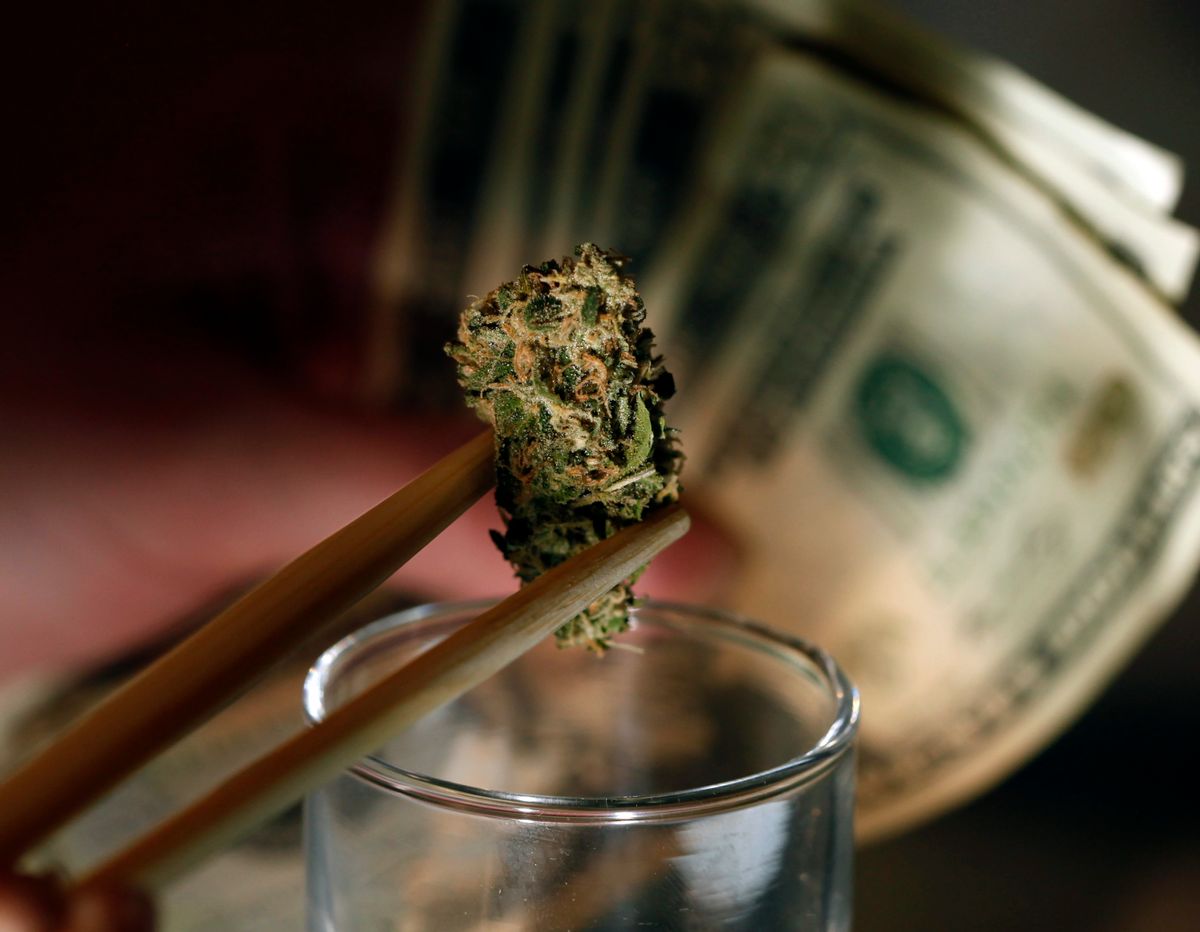 The western US has marijuana legalization in four states—Alaska, Colorado, Oregon, and Washington—as well as legal medical marijuana in a number more, including California, with the most wide-open medical marijuana system of all.
The western US has marijuana legalization in four states—Alaska, Colorado, Oregon, and Washington—as well as legal medical marijuana in a number more, including California, with the most wide-open medical marijuana system of all.
The east, not so much. The nation's capital has personal legalization, otherwise, outside of a handful of tightly regulated medical marijuana states, that's about it.
A comparison of marijuana prices courtesy of PriceofWeed.com and the Washington Post's Wonk Blog makes evident the pot prohibition premium East Coast pot smokers are paying in comparison with their West Coast brethren. The premium is essentially a "risk tax" imposed on consumers when providers in a market increase their prices to account for the possibility of being arrested for their efforts.
There are a couple of exceptions to the general rule, which we will discuss below. In the meantime, here are pot prices per ounce reported in big cities out west:
Seattle, $212
Denver, $233
San Francisco, $272
Los Angeles, $284
And on the East Coast and the Midwest:
Miami, $250
Chicago, $300
New York, $345
Washington, DC, $350
While there is some variation among cities, the average price in the western cities is $250 an ounce, while the average price for eastern and midwestern cities is $311. That's a $61-an-ounce prohibition premium for consumers east of the Mississippi, adding roughly 25% to the price of an ounce out west.
The two anomalies that immediately jump out are Miami, where prices are surprisingly low, and Washington, DC, where prices are surprisingly high, given that it legalized small-time pot possession and cultivation last year.
DC has semi-legalized, but doesn't yet allow retail marijuana commerce, unlike the legal marijuana states, or even California, with its wide-open medical marijuana system. That could partially explain high prices there. Another explanatory factor is that, while DC allows personal grows, it is an entirely urban jurisdiction, with no open spaces for large-scale cultivation. DC is not Humboldt County, and it likely has to import most of the weed it consumes. And it's importing it from places where it is either cultivated illegally or transported illegally from places where it is legal to grow.
Similarly Chicago, which has significantly lower prices than the northeastern cities, may be benefitting from relative proximity to legal pot-growing states. It's 700 miles closer to Colorado and the West Coast. When the risk of transporting pot is lessened because the route is shorter, the risk tax goes down.
As for Miami, the low prices there are a bit of a mystery. The state has a reputation as an indoor pot cultivation powerhouse, in part because South Florida's muggy climate means home air-conditioning systems run 365 days a year, making it more difficult for police to find and investigate grows based on high electricity bills. But it also has relatively harsh marijuana cultivation laws. It is a historic smuggling center for Latin American drugs, but the data here are for high-grade US weed, not mid-grade Mexican, Colombian or Jamaican, so that doesn't really explain it, either.
The Miami anomaly aside, the lesson is clear, and it ain't rocket science: In addition to all the other costs imposed by marijuana prohibition, it hits pot smokers right in the wallet.
As a society, we may not want to make marijuana too cheap from fear that people will be inclined to use it to excess. That's where things like excise or luxury taxes come into play, as they have in the western legal states. They create a price floor. If there's a $100 excise tax on an ounce of pot, it doesn't matter how cheaply you can produce it, it's still going to cost $100—plus production costs and profits.
The western states aren't taxing it that steeply, but they are effectively creating a floor on pot prices. Still, the taxed weed out west is cheaper than the untaxed weed back east. Nobody likes paying taxes, but a pot tax is still significantly less expensive for consumers than a pot prohibition premium, and the revenues go for the general good, not into the pocket of Billy the Black Market Bud Man.

Shares